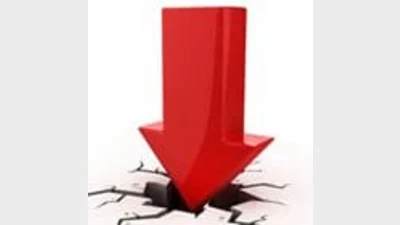Australian Ethical profit down 64 per cent



Australian Ethical has reported a net profit after tax (NPAT) of $402,000 for the 2011-12 financial year, down 64 per cent on the previous result.
The company put the drop in NPAT down to the fall in inflows across the industry, lower market values and the decision by Australian Ethical to "gradually reduce management fees".
Australian Ethical also incurred $319,000 in redundancy costs over the year, reducing staff numbers to 36 from 50. The redundancies are part of restructure intended to "reduce operating costs to position [the company] for a more competitive, lower fee environment in the future", according to a statement to the ASX.
The financial year result also included $125,000 in expenses related to shareholder action. In June, a dissident group of shareholders who controlled around 20 per cent of the company were defeated at an extraordinary general meeting in Canberra.
The company also incurred a non-cash impairment charge of $210,000 arising from a three-yearly valuation of a property in Bruce, ACT.
Funds under management for Australian Ethical at 30 June 2012 (before distribution) were $626.6 million, down 3.6 per cent on the previous year. The company saw revenues of $14.8 million, down 5.9 per cent on 2010-11.
Total expenses incurred for 2011-12 were $13.4 million, up 1.6 per cent on the previous year.
The board has announced a fully franked final dividend of 35 cents per share, bringing the total dividend for 2011-12 to 60 cents per share (fully franked).
Australian Ethical managing director Phil Vernon said the past year had seen considerable change for the company.
"In the face of difficult market conditions we have continued repositioning the business from being a high-cost, high priced business to being far more competitive, commercial, service-orientated and efficient," Vernon said.
Recommended for you
In this episode of Relative Return Insider, host Keith Ford and AMP deputy chief economist Diana Mousina break down the spike in inflation numbers and what it means for the possibility of a rate cut as we move into the new year.
In this episode of Relative Return Insider, host Keith Ford and AMP economist My Bui explore Prime Minister Anthony Albanese’s trip to the US and the critical minerals deal stemming from his meeting with President Donald Trump.
In this episode of Relative Return Insider, host Keith Ford and AMP chief economist Shane Oliver unpack the latest unemployment numbers and what they mean for a rate cut, as well as how the latest flare-up in the ongoing US–China trade dispute has highlighted the remaining disparity between gold and bitcoin.
In this episode of Relative Return Insider, host Keith Ford and AMP chief economist Shane Oliver take a look at the unfolding impacts and potential economic ramifications of the US government shutdown and the surge in gold and bitcoin prices.







